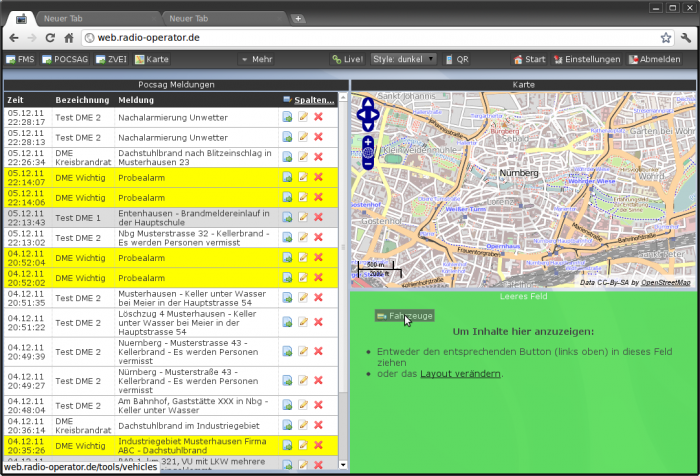

An address codeword contains 18 bits of address (bit 30 through to 13), and 2 function bits (12 & 11). The codewords are either address or data, which is indicated by the first bit transmitted, bit 31.
#Pocsag decoder software free code#
The generating polynomial g( x) for the BCH (31, 21) code is: g ( x ) = x 10 + x 9 + x 8 + x 6 + x 5 + x 3 + 1 = ( x 5 + x 2 + 1 ) ( x 5 + x 4 + x 3 + x 2 + 1 ) Consequently, the code can detect and correct up to 2 errors in a codeword. The error-correcting code has a 6-bit Hamming distance: each 31-bit codeword differs from every other codeword in at least 6 bits. Bits 31 through 1 are a binary BCH code (31, 21). Each codeword carries 21 bits of information (bits 31 through 11), 10 bits of error-correcting code (bits 10 through 1), and an even parity bit (bit 0). Transmission uses 32-bit blocks called codewords. Often single transmission channels contain blocks of data at more than one of the rates. Federal Communications Commission (FCC) has mandated this transition be completed prior to 2013. Some jurisdictions require that all systems move to a "narrowband" configuration, using 12.5 kHz channels and ☒.5 kHz frequency shifts (for example, the U.S. The ±4.5 kHz frequency shift is used along with a 25 kHz channel spacing, known as "wideband". The high frequency represents a 0 and the low frequency a 1. The modulation used is FSK with a ±4.5 kHz shift on the carrier. The meetings were chaired by R.H.Tridgell and were attended by representatives of British, European, and Japanese pager manufacturers How it works These meetings were successful and in February 1981 the CCIR (Comité consultatif international pour la radio) the forerunner of the ITU-R accepted the code as Radiopaging Code No.1 (RPC No.1),(Rec, 584). In 1976 an international group of engineers began to meet to explore the possibility of developing a new code for wide area paging paging networks covering regions of entire countries. Super-POCSAG has mostly displaced the POCSAG in the developed world but the transition is still in progress.

With Super-POCSAG, 1200 bits per second or 2400 bits per second transmission rates are possible. The POCSAG code is generally transmitted at one of three data rates 512, 1200 or 2400 bits per second. In the 1990s new paging codes were developed that offered higher data transmission rates and other advanced features such as European and Network roaming. Its usual designation is an acronym of the Post Office Code Standardisation Advisory Group, the name of the group that developed the code under the chairmanship of the British Post Office that used to operate most telecommunications in Britain before privatization.īefore the development and adoption of the POCSAG code, pagers used one of several proprietary codes such as GOLAY. 1 (usually and hereafter called POCSAG) is an asynchronous protocol used to transmit data to pagers. An NEC pager, using POCSAG coding branded for the Skyper network


 0 kommentar(er)
0 kommentar(er)
